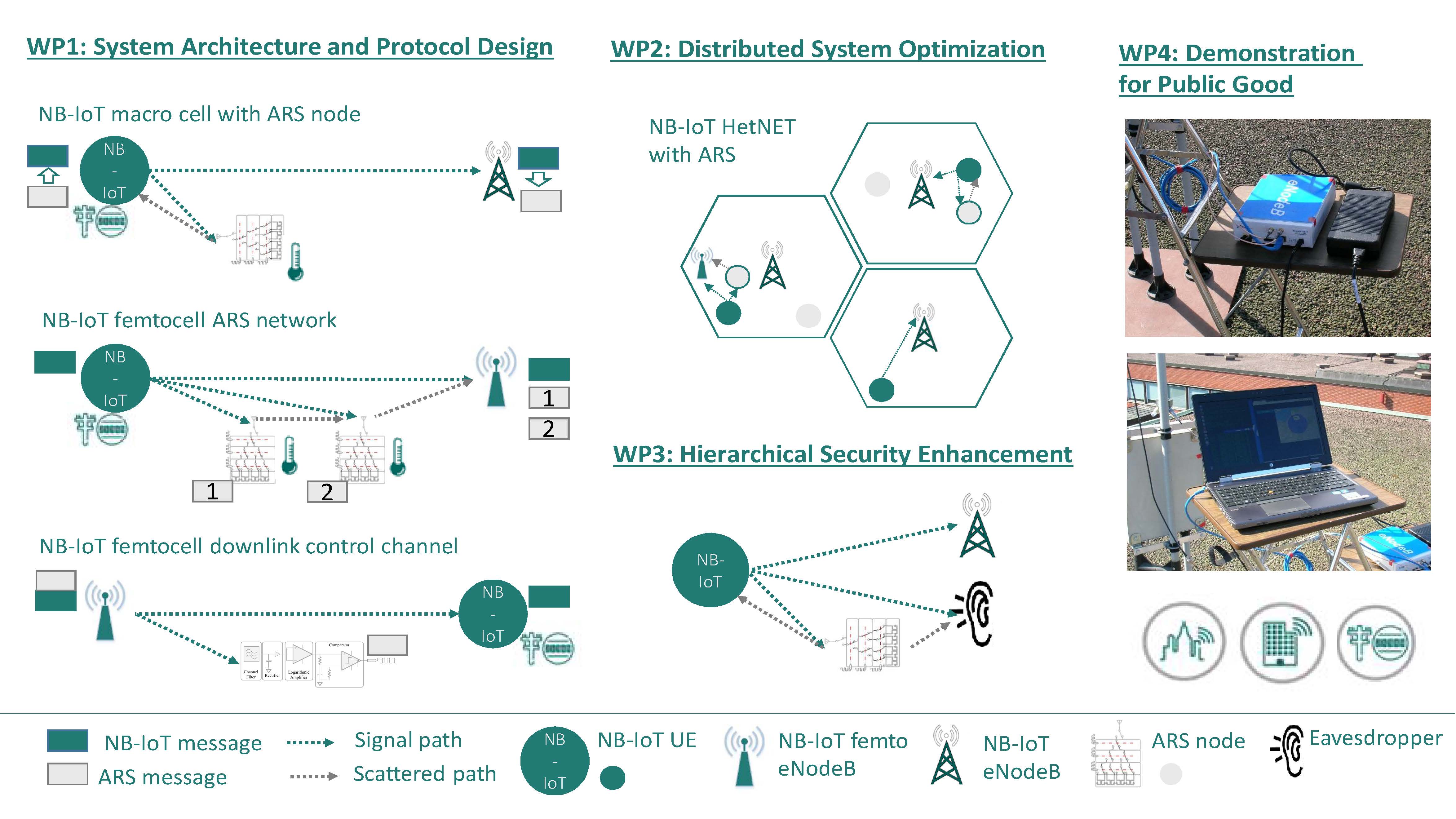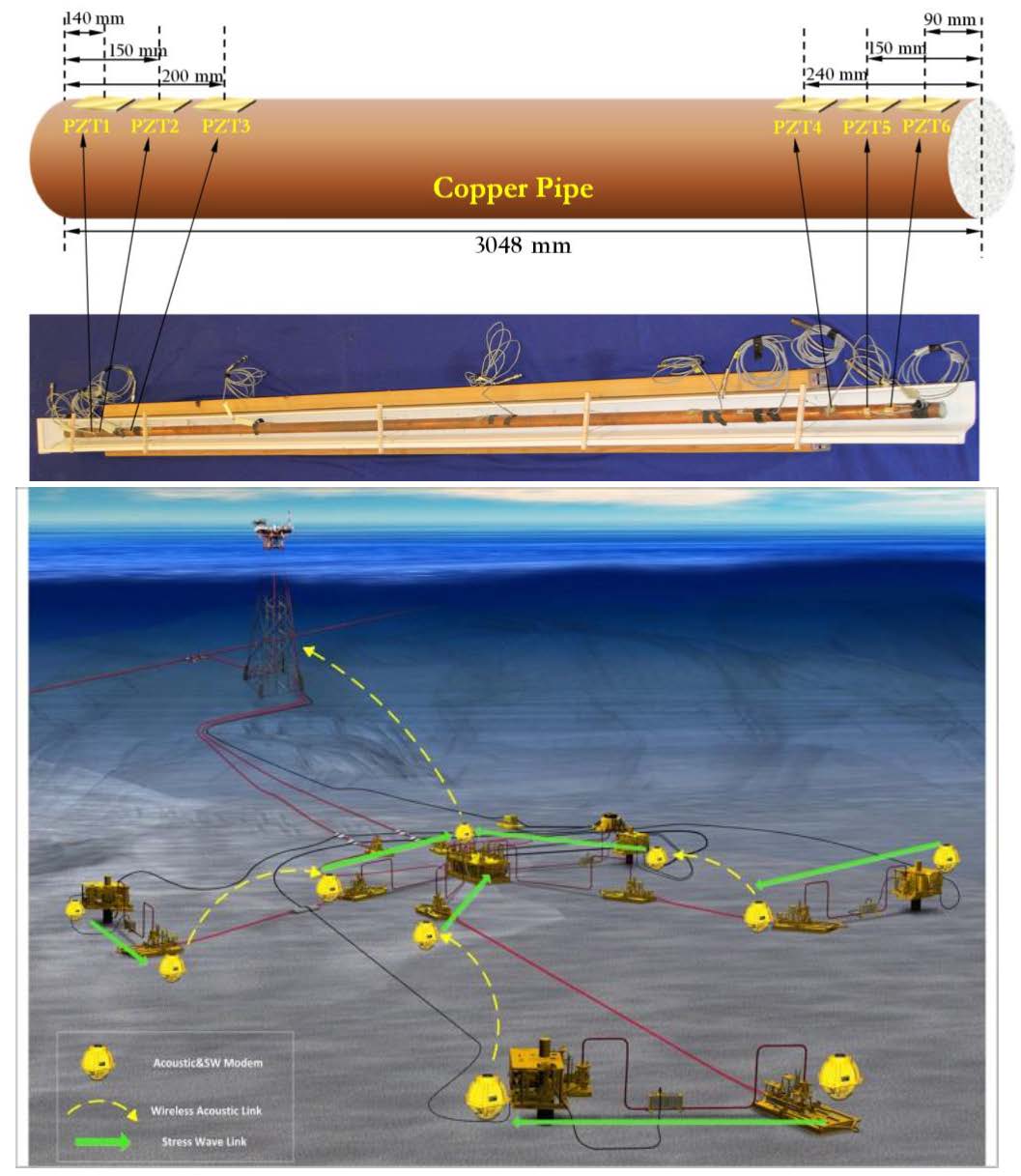 Ambient Re-scatter Inspired Machine Type Communication for Heterogeneous IoT Systems
Ambient Re-scatter Inspired Machine Type Communication for Heterogeneous IoT Systems
Internet of Things (IoT) has potential benefits and numerous applications, ranging from smart cities to assisted living. IoT is also expected to have many trillion dollars economic impact in the next decade. IoT is a network of physical objects, whose connectivity requires low power consumption, long battery life, low duty cycle and massive number of low cost devices. Based on the recently standardized Narrow band IoT (NB-IOT) technique for machine type communications, the proposed scheme targets adding low cost Ambient Re-Scatter (ARS) devices to an existing NB-IOT communication system, which can significantly improve the overall system capacity and the excess capacity can be shared between the NB-IOT and ARS systems. Hence, this project enables to integrate ultra-low power devices to the communication systems in spectral and energy efficient manners. Novel methods and transmission schemes allowing ARS devices to collaborate with each other and with other networks are also proposed. The success of this project will boost such ultra-low power IoT solutions. The transformative and interdisciplinary nature of the proposed research work will advance the knowledge of communications engineering, and the outcomes of the project can potentially be used by industry for network development and impact future industrial standardization.
 WiFIUS: Collaborative Research: Ambient Re-Scatter Inspired Machine Type Communication for Heterogeneous IoT Systems (CNS-1702850), PI. National Science Foundation, April 1, 2017 – March 31, 2019. This is a collaborative project with Dr. Zhu Han at University of Houston, Dr. Riku Jäntti at Aalto University, Finland, and Dr. Jukka Lempiäinen at Tampere University of Technology, Finland.
WiFIUS: Collaborative Research: Ambient Re-Scatter Inspired Machine Type Communication for Heterogeneous IoT Systems (CNS-1702850), PI. National Science Foundation, April 1, 2017 – March 31, 2019. This is a collaborative project with Dr. Zhu Han at University of Houston, Dr. Riku Jäntti at Aalto University, Finland, and Dr. Jukka Lempiäinen at Tampere University of Technology, Finland.
 DEUS: Distributed, Efficient, Ubiquitous and Secure Data Delivery Using Autonomous Underwater Vehicles
DEUS: Distributed, Efficient, Ubiquitous and Secure Data Delivery Using Autonomous Underwater Vehicles
Ocean Big Data (OBD) is an emerging area of research that benefits ocean environmental monitoring, offshore exploration, disaster prevention, and military surveillance. It is now affordable for oil and gas companies, fishing industry, militaries, and marine researchers to deploy physical undersea sensor systems to obtain strategic advantages. However, these sensing activities are scattered, isolated, and often follow the traditional “deploy, wait, retrieve, and post-process” routine. Since transmitting information underwater remains difficult and unreliable, these sensors lack a cyber interconnection, which severely limits ocean cyber-physical systems. This project aims to providing a viable cyber interconnection scheme that enables distributed, efficient, ubiquitous, and secure (DEUS) data delivery from underwater sensors to the surface station. The proposed cyber interconnection scheme features cheap underwater sensor nodes with energy harvesting capability, a fleet of autonomous underwater vehicles (AUVs) for information ferrying, advanced magnetic-induction (MI) antenna design using ferrite material, distributed algorithms for efficient data collection via AUVs, and secure data delivery protocols. The success of this project will help push the frontier of Internet of Things in Oceans (IoTO) and OBD, both of which will find numerous underwater applications in offshore oil spill response, fisheries management, storm preparedness, etc., which impact the economy and well-being of not only coastal regions but also inland states. The project will also provide special interdisciplinary training opportunities for both graduate and undergraduate students, particularly women and minority students, through both research work and related courses on underwater wireless communication, network security, and AUV designs.
 CPS: Synergy: Collaborative Research: DEUS: Distributed, Efficient, Ubiquitous and Secure Data Delivery Using Autonomous Underwater Vehicles (CPS-1646607), PI. National Science Foundation, January 1, 2017 – December 31, 2019. This is a collaborative project with Dr. Aaron Becker, Dr. Jiefu Chen and Dr. Zhu Han at University of Houston and Dr. Yahong Rosa Zheng at Missouri University of Science and Technology.
CPS: Synergy: Collaborative Research: DEUS: Distributed, Efficient, Ubiquitous and Secure Data Delivery Using Autonomous Underwater Vehicles (CPS-1646607), PI. National Science Foundation, January 1, 2017 – December 31, 2019. This is a collaborative project with Dr. Aaron Becker, Dr. Jiefu Chen and Dr. Zhu Han at University of Houston and Dr. Yahong Rosa Zheng at Missouri University of Science and Technology.
 Stress Wave Assisted Communications in Subsea Environments
Stress Wave Assisted Communications in Subsea Environments
In this project, a new, stress wave based communication method using piezoelectric transducers will be introduced for subsea communication. This new method, through specially designed sensor nodes, gathers data from subsea sensors, encodes the data into modulated stress waves and utilizes man-made subsea structures such as pipelines as robust conduits for data transmission. By installing multiple sensor nodes, the entire system of subsea pipelines can be used as a web of pathways for stress wave based communication among the network of sensor nodes. The Gulf of Mexico (GoM) currently carries many miles of shallow and deepwater pipelines, and subsea oil and gas exploration and production efforts will see particular benefits from the development of the stress wave communication method. With the communication method, GoM operators will see a potentially large reduction in costs related to subsea data transmission while at the same time benefiting from more robust communications. The stress wave communication method has great potential for succeeding in deepwaters where many conventional communication methods would otherwise face excessive difficulty. The method to be developed will bring additional benefits not directly related to subsea communication. Stress wave communication can also benefit well logging by using the drill string as a conduit for waves. Furthermore, since piezoelectric transducers are used, the host structure can become intelligent and detect damage (i.e. cement-casing delamination, or pipeline impact). In order for stress wave communication to be used for subsea environment, a multidisciplinary approach requiring expertise from mechanical and electrical engineering is required to perform several key research tasks. These tasks include the design of the transducer and sensor node, as well as the protocol stack used to support stress wave communication across the sensor network. The sensor node, including the transducer, needs to be designed to work well underwater and with pipeline structures. The pipeline channel will also need to be characterized to allow proper modulation of the stress waves. A small scale testing unit will be built to demonstrate the functionality of the stress wave communication method in subsea-like conditions.

